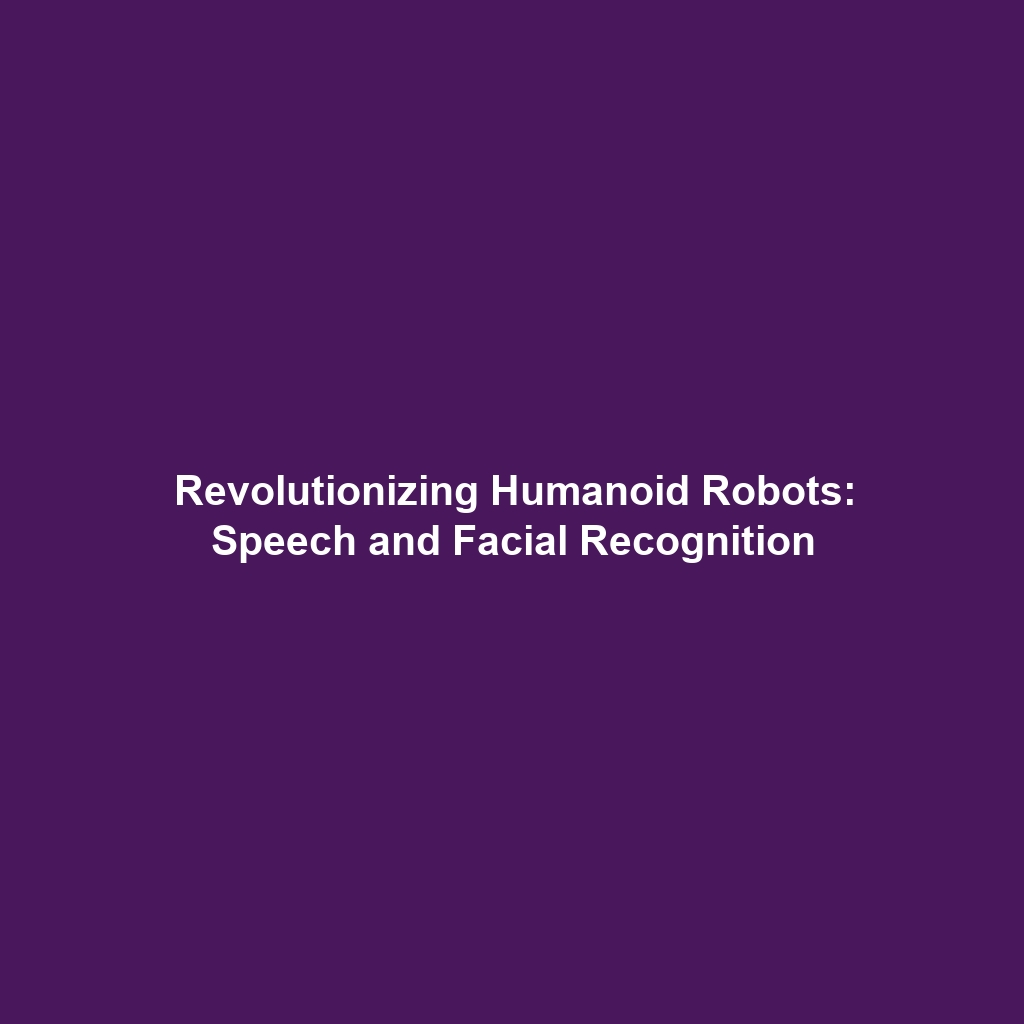Speech and Facial Recognition: Enhancing Interaction Capabilities in Humanoid Robots
Introduction
In the realm of robotics, Speech and Facial Recognition are pivotal technologies that significantly enhance the interaction capabilities of Humanoid Robots. The integration of these advanced systems allows robots to communicate more effectively with humans, fostering a more natural and intuitive collaboration. As the demand for intelligent robots grows across various sectors, understanding the importance and implications of Speech and Facial Recognition becomes increasingly critical in shaping user experiences and operational efficiencies.
Key Concepts
Understanding Speech Recognition
Speech recognition technology enables Humanoid Robots to interpret and respond to human speech. This involves converting spoken language into text, allowing robots to understand commands and queries accurately.
The Role of Facial Recognition
Facial recognition plays a vital role in enabling Humanoid Robots to identify and analyze human emotions and expressions. This technology enhances interpersonal interactions, allowing robots to adapt their responses based on emotional feedback.
Integration of Technologies
The combination of speech and facial recognition enhances the interactive capabilities of Humanoid Robots, enabling more engaging user experiences and increasing their effectiveness in various tasks.
Applications and Real-World Uses
Speech and Facial Recognition technologies find numerous practical applications in enhancing the functionality of Humanoid Robots:
- Healthcare: Humanoid Robots assist in patient monitoring and therapy, using speech and facial recognition to gauge emotional states and needs.
- Customer Service: Robots equipped with these technologies can provide personalized assistance and support, improving user engagement.
- Education: Interactive learning sessions are enhanced as Humanoid Robots communicate and adapt to student interactions using speech and facial cues.
Current Challenges
Despite significant advancements, there are several challenges in implementing Speech and Facial Recognition in Humanoid Robots:
- Accuracy Issues: Variability in accents, speech patterns, and environmental noise can hinder speech recognition accuracy.
- Privacy Concerns: The use of facial recognition raises ethical questions regarding privacy and data security.
- Emotional Interpretation: Accurately interpreting human emotions through facial recognition remains a complex issue, often leading to miscommunication.
Future Research and Innovations
The future of Speech and Facial Recognition in Humanoid Robots is promising, with ongoing research focused on the following innovations:
- Enhanced Machine Learning: Developing algorithms that improve recognition accuracy and adaptability in diverse environments.
- Emotion AI: Integrating artificial intelligence that can interpret and respond to a wider range of human emotions.
- Real-Time Processing: Innovations in hardware that enable real-time processing of speech and facial recognition, improving responsiveness.
Conclusion
In summary, Speech and Facial Recognition serve as fundamental pillars for enhancing interaction capabilities in Humanoid Robots. As these technologies evolve, they promise to reshape human-robot interactions, making them more intuitive and efficient. For those interested in exploring more about this topic, consider reading about future innovations in robotics or key concepts in AI.

Leave a Reply